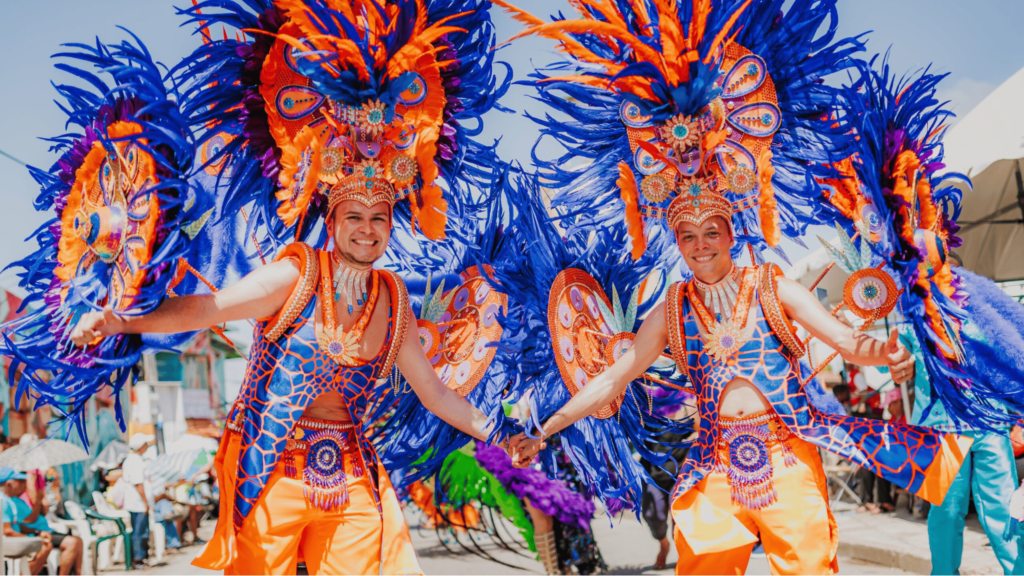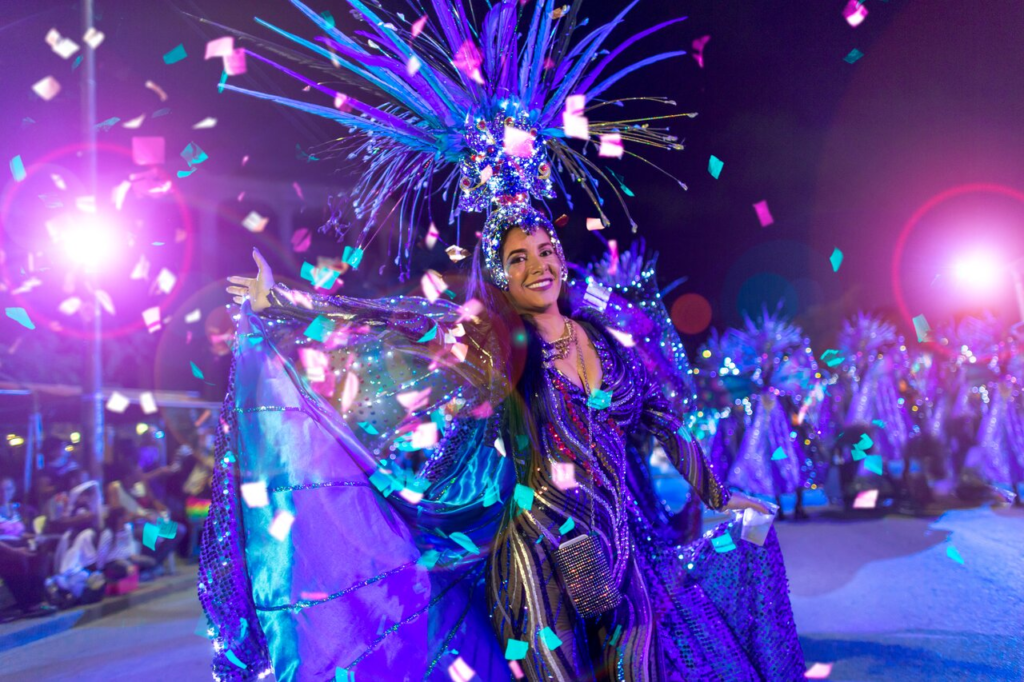When most people think of pre-Lenten carnival, they picture bright costumes, upbeat music, and high-energy parades. In Aruba, the experience is even more immersive—filled with energy, color, and moments that leave a lasting impression. Whether you’re standing along the parade route or dancing in the streets, the celebration draws you in from every angle.
With perfect weather, welcoming communities, and plenty of Aruba vacation deals available in the early months of the year, it’s no surprise that more travelers are planning their trips around Carnival. This vibrant time of year offers a deeper, more dynamic way to experience Aruba—one that goes far beyond its famous beaches.
Here’s what you should know before experiencing one of the island’s most iconic celebrations.
Carnival Is a Months-Long Celebration
Aruba’s Carnival season stretches from November through early March, starting with smaller pre-Carnival events that grow in size and intensity as the months progress. One of the earliest is Tjipet, a lively tradition where locals cover themselves in white powder and dance through the streets in celebration.
As the season continues, competitions like calypso and road march, as well as the popular Tumba Festival, build anticipation island-wide. These early events offer an authentic, less crowded way to experience the Carnival spirit. With something happening nearly every weekend, you’ll find plenty of opportunities to catch the excitement—no matter when you visit.

It’s a Fusion of Cultures and History
Nowhere is Aruba’s multicultural heritage more visible than during Carnival. Introduced in the early 1950s, the tradition grew from a mix of Dutch, African, and Latin American influences—blending European pre-Lenten customs with the vibrant music and dance of the Caribbean. Over the decades, it’s evolved into a uniquely Aruban celebration that reflects the island’s identity.
Everything from the lyrics in calypso songs to the choreography of dance troupes tells part of the story. Carnival isn’t just entertainment—it’s cultural expression. Attending the festivities gives you a front-row seat to Aruba’s rich history, told through rhythm, costume, and community pride.
The Grand Parades Are the Main Attraction
If there’s one event that defines Aruba’s Carnival season, it’s the Grand Parade. Held in Oranjestad and San Nicolas, these parades feature dazzling costumes, massive music trucks, choreographed dance troupes, and thousands of spectators. The San Nicolas Lighting Parade, with its glowing floats and illuminated outfits, brings a magical atmosphere to the night.
Equally worth seeing are the Children’s Parades, where young participants proudly showcase their creativity in colorful, age-appropriate costumes. The season ends with the symbolic Burning of King Momo—a fiery farewell that represents letting go of past troubles and starting fresh. While each parade offers something different, all reflect the spirit of Carnival in full swing. Whether you’re dancing along or simply taking it all in, these parades are a must-see experience that leaves a lasting impression.

Music and Dance Are at the Heart of the Festivities
The sound of Carnival is impossible to ignore. From the deep bass of road march tunes to the infectious rhythm of calypso and soca, music is what keeps the celebration moving. Bands perform on enormous music trucks, or “roadpieces,” as they lead costumed groups through the streets, creating a mobile concert unlike anything else. The island also hosts music competitions where local artists battle for titles like Road March and Calypso Monarch.
Dance is just as central to the experience. Whether it’s rehearsed choreography or spontaneous movement from the crowd, you’re surrounded by energy at every turn. Many groups train for months to perfect their routines, blending creativity and tradition in every step. Even if you don’t join in, it’s nearly impossible to stand still.
Costumes Are a Spectacle in and of Themselves
Few things capture the visual magic of Carnival like the costumes. Covered in feathers, sequins, gemstones, and bold fabrics, these designs are more than eye-catching—they’re works of art. Each group follows a specific theme, and participants often spend months preparing their outfits down to the last detail. The results are elaborate, vibrant, and perfectly suited for the scale of the celebration.
While adult costumes often aim for grandeur and glamour, children’s outfits lean more playful and age-appropriate, yet still full of color and personality. As a tourist, consider joining a group by renting or custom-ordering a simpler costume to make the experience even more immersive. The explosion of color and creativity on display is one of the most captivating parts of Aruba’s Carnival—and a sight you will not soon forget.
Carnival Is a Community Effort
What makes Aruba’s Carnival especially meaningful is how deeply it’s rooted in the community. From costume designers and dance troupes to musicians and parade organizers, locals of all ages take part in bringing the season to life. Schools, neighborhoods, and cultural clubs often work year-round to prepare, building a sense of pride and connection that shines throughout the celebrations.
This collective effort is part of what gives Carnival its unique energy. You’re not just watching a performance—you’re stepping into something the entire island has shaped together. That shared spirit is contagious, and it’s one of the reasons visitors leave with more than just photos. They go back home with a genuine sense of having been part of something special.

Plan Ahead: Timing, Travel, and Etiquette
Carnival is one of Aruba’s busiest seasons, so it pays to plan ahead. Flights and hotels or vacation rentals can book up quickly—especially near the Grand Parade—so reserve early for the best rates and availability. Checking the official schedule in advance helps you time your visit around the events you most want to experience.
On parade days, wear comfortable shoes, stay hydrated, and bring sun protection. Be respectful of crowd barriers and give performers space to move. The ambiance is festive and family-friendly, and politeness is highly valued. With a bit of planning and cultural awareness, you’ll enjoy a smoother, more memorable Carnival experience.
Aruba’s Carnival season is more than just a celebration. It’s an invitation to experience the island’s culture in its most vibrant form. Whether you’re drawn by the music, the energy, or the sense of community, it’s a trip that stays with you long after the confetti settles. Start planning your visit today and make unforgettable memories in the heart of Aruba’s joyous spirit!
